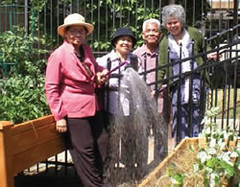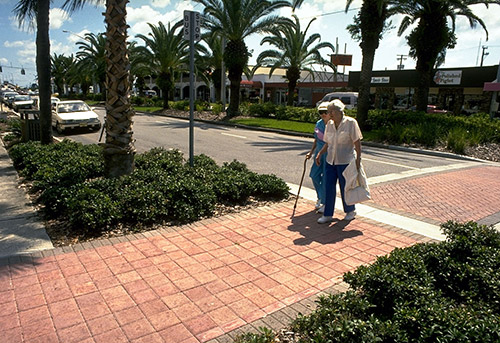EPA invites communities to apply for awards for active aging and smart growth strategies

Posted March 8, 2011 at 2:20PM
By adopting smart growth principles, communities can design places that increase mobility and improve quality of life for elders. In particular, neighborhoods that integrate homes with shops, services, and parks and recreational facilities allow all residents—but especially older adults—to pursue an interesting and active life without depending on a car. Enhancing sidewalk and street crossing design can also make communities more age-friendly, as can designing and constructing specific facilities for seniors.
To promote these concepts, the federal Environmental Protection Agency has created a national recognition program for communities that have excelled in strategies, planning and programs that combine active aging and smart growth. The Achievement Award, the top honor, is awarded to communities for overall excellence; the Commitment Award recognizes communities that have developed and begun to initiate a specific plan to implement smart growth and active aging principles.
 Communities self nominate for the awards, and a panel of judges selects the winners each year. Applications for 5th annual Building Healthy Communities for Active Aging the 2011 are due July 11, 2011.
Communities self nominate for the awards, and a panel of judges selects the winners each year. Applications for 5th annual Building Healthy Communities for Active Aging the 2011 are due July 11, 2011.
Last year, for example, an Achievement Award went to the city of Charlotte and Mecklenburg County, North Carolina, which has been doing so many things right lately for smart growth and transportation. In 2005, the county adopted a “Status of Seniors Initiative” (not a great title, that one), a comprehensive set of recommendations to make the its built environment more age-friendly. More specifically, as part of its award-winning street design guidelines, Charlotte has incorporated senior-friendly design into street improvements, increasing the size and readability of its signage, increasing the number of crossing medians, providing longer and audible street crossing lanes, and providing for pedestrian safety measures in project implementation.
A 2010 Commitment Award went to the Philadelphia Corporation for Aging, which has developed an integrated research, planning and policy agenda based on EPA’s model community principles for active aging. As a result, a wide array of private, nonprofit, and government agencies has committed to creating an age-friendly city, focusing on five target areas: government policies that provide a high quality of life for persons of all ages; a built environment that facilitates safety and social connectedness; an aging network that considers the effect of the environment on the well-being of their consumers; universities that partner with the community to create cutting edge research; and emerging leaders from all fields who incorporate older adults in their work. Examples of collaborative projects  include an age-friendly parks checklist, promoting accessory dwelling units in the city’s new zoning code, developing age-friendly bus shelters, and increasing access to community gardens and urban farms.
include an age-friendly parks checklist, promoting accessory dwelling units in the city’s new zoning code, developing age-friendly bus shelters, and increasing access to community gardens and urban farms.
2009 Commitment Award winner San Mateo County, California continues to pursue its Half Moon Bay Senior Campus Plan, the result of a collaborative effort of local nonprofit organizations and the county to develop 250 units of affordable senior housing, a senior center, an adult day health care center, and a network of pedestrian walkways and open space tying the campus together. Phase 1 of the plan has received design and construction entitlement, and the development team has selected a general contractor. The Housing Authority of San Mateo has also entered into a contract to develop Phase 2 of the campus.
EPA is to be commended for its leadership on these issues. To learn more about the awards and past winners, go here. For more information on how to apply for the 2011 awards, go here.
Move your cursor over the images for credit information.
